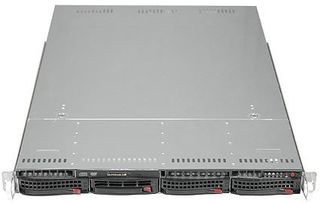The Server Primer, Part 1
Server

Servers and server hardware are topics that many publications do not want to write about. The main reasons are technical complexities - there are many aspects that go beyond consumer hardware - and a limited readership. Only administrators and decision makers, along with a handful enthusiasts, really care about professional class hardware. However, server hardware is closer to desktop hardware than you think, and the additional knowledge certainly can’t hurt.
When people think of servers they sometimes associate the topic with huge computers, heavyweight hardware and highest performance, but that isn’t necessarily the case. There are various form factors and a plethora of hardware and applications, making it difficult to find a universal definition of a "server".
While professional and consumer hardware are very similar in many ways, we believe that only an appreciation of certain features and qualities allows for a precise characterization of the term "professional". For example, your home PC has to be fast, quiet, upgradeable and of course somewhat affordable. You want it to last for several years and you’re likely willing to accept downtime for the sake of maintenance or for necessary bug-fixing. Servers, however, have different needs; here, the buzzwords are reliability, availability and serviceability (RAS).
First and foremost, servers need to be reliable. Whether the unit is a database server, a file server, a web server or other type, it needs to be reliable at all times and at all costs, because you’re a business depends on it. Second, servers have to be available, which means that both hardware and software have to work together to bridge or minimize downtime. Finally, serviceability is absolutely crucial in the professional space, which means that if the administrator has to do something, it must be done the most efficient way, without impacting either of the two requirements already mentioned. This is why the performance of servers is usually a function of requirement considerations and long-term strategies rather than emotional desires, as is usually the case with gaming rigs or living room PCs.
This article talks about server components and describes the technologies they share with consumer products, as well as the differences and advantages they show. Also, since everything in the professional space is much more expensive than what we’re normally used to, we decided that it was time for a little background information.
Join our discussion on this topic
Stay on the Cutting Edge
Join the experts who read Tom's Hardware for the inside track on enthusiast PC tech news — and have for over 25 years. We'll send breaking news and in-depth reviews of CPUs, GPUs, AI, maker hardware and more straight to your inbox.
Most Popular


